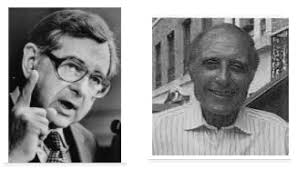
By Bonnie Finnerty, Education Director
The investigative research, the historical perspective, the eloquent writing…there is a lot to admire in Sue Ellen Browder’s book Subverted: How I Helped the Sexual Revolution Hijack the Women’s Movement. But perhaps most powerful is her own journey as mom and young professional that parallels and echoes the women’s movement. She wasn’t just an observer of a cultural phenomenon, she was immersed in it.
In Chapter 3, Making Up a Revolution, Browder recalls looking for journalism work and being forced to conceal having a child in order to get a job. Motherhood was frowned upon as it limited a woman’s freedom to devote herself completely to other endeavors. The irony of this “woke feminism” is that women were only trading one prejudice for another. As Browder says, “Freedom for women was in the air. But mothers were still in chains.”
Promoting this untethered working woman identity was Browder’s boss, Cosmopolitan’s editor-in-chief, Helen Gurley Brown. She believed what held women back from career success was the “built-in mechanism in their bodies that allows them to have babies.” In other words, she viewed a woman’s natural gift of fertility as her single biggest detriment.
Through her magazine and specifically the fictional Cosmo Girl, Helen Gurley Brown advanced the propaganda of the sexual revolution, endorsing unmarried sex free from motherhood. Hence contraception, and hence, abortion as “backup.”
To make her articles palatable to Brown, Browder invented story lines to suit that agenda, describing herself as “a mercenary, a literary soldier for hire.” Little by little, journalistic ethics were abandoned. Eventually, Browder felt the disconnect between her professional persona and her life as a loving wife and mother. And it made her sick, physically sick.
Yet, like many others, Browder was drawn to a movement that fought for greater opportunities. She looked to feminist leaders like Betty Friedan and the newly formed National Organization of Women (NOW) as signposts of hope and “scrambled to climb aboard NOW’s freedom train.” It would be many years before learning the backstory of NOW and realizing that Browder herself was not only a purveyor of propaganda but a victim of it.
In Chapter 4 The Deceiver Becomes the Deceived Browder introduces us to Lawrence Lader, “a Harvard grad, heir to old money, and close friend to Betty Friedan.” Lader wrote the biography of Margaret Sanger, whom he considered the greatest influence of his life. A secondary influence was Hugh Moore, author of “The Population Bomb” who believed “too many babies were the root cause of poverty, crime, and wars.” Lader also penned Moore’s biography, warning that “We are on the way to breeding ourselves to death.”
Despite his obsession with abortion “as the royal road to sexual freedom,” Lader’s friend and fellow writer, Betty Friedan, remained unconvinced for many years. Ultimately, however, she was won over. And we know how from the first-hand testimony of Dr. Bernard Nathanson.
Nathanson directed one of the largest abortion clinics in the world and partnered with Lader to found the National Association for the Repeal of Abortion Laws (NARAL). On a car trip in 1967, Lader declared his intention of recruiting feminists for his abortion crusade.
He also revealed his plan to identify the common enemy of the “revolution”—the Catholic Church hierarchy. And he shared the slogan that would further abortion propaganda: No woman can call herself free who does not own and control her own body. Lader would credit Sanger with that slogan, but if it were hers, it’s unlikely she meant to promote abortion. Sanger called abortion “barbaric” with the issue dividing her and Lader until her death.
Lader’s carefully crafted 1966 book Abortion finally swayed Friedan to embrace the issue as part of the women’s movement. However, she would meet with opposition within NOW, a story told in later chapters.
Lader’s book also greatly influenced Justice Harry Blackmum. Abortion, along with bogus history supplied by NARAL attorney Cyril Chestnut Means, Jr., was cited fourteen times in the majority opinions he wrote for Roe and Doe.
Statistics in Lader’s book and in later NARAL press releases were fabricated, an admission later made known by Nathanson, a pro-life convert. “Knowing that if a true poll were taken we would be soundly defeated, we simply fabricated the results of fictional polls,” he confessed.
In addition, Lader and Nathanson also fabricated the number of illegal abortions and the number of women who died from illegal abortions. These lies “took root in the consciousness of Americans” convincing many that “we needed to crack the abortion law.”
But many feminists were not on board with the abortion agenda, as Betty Friedan would soon learn.
Join us in reading Chapters 5 and 6 for next week’s installment.
Quotable quotes:
“Laced with partial truth, propaganda’s bitter poison become more difficult to detect and sweeter to swallow.” (p. 39)
“The fantasy of a woman as a radical individualist who belongs only to herself and is disconnected from others-betrays the truth of women’s lives.” (p. 44)
